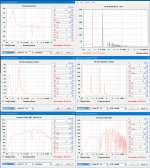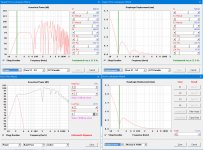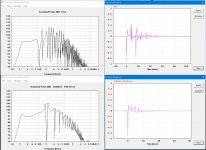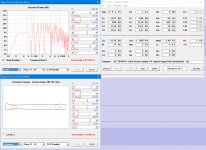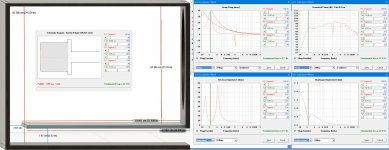Has anyone experience with tapped horns and transmission lines?
is there any reason why the sound quality of a TH should supersede that of the TL? The Tapped horn design in the pictures is just an example...though I haven't been able to improve upon this design, has no bearing on whether or it is possible to achieve, with a more knowledgeable designer.
Any thoughts?
(not going to change drivers fyi)
Attachments
I think you should apply the desired lowpass into the simulation, TH is definitely not meant to be used out of its linear band.
The reduction in excursion requirements in the passband should theoretically give the TH a bit of an advantage reproducing bass in that range. But that has to be weighed against the reduction in the usable passband. BTW, it looks like the design is T-TQWT (mouth larger than throat), rather than a TH.
I don't really have anyone to guide through the tapped horn experience
I'm just a guy twisiting numbers to try get a response, so take the designs with a grain of salt. I'm sure someone else can do better.....actually be my guess...lol
Box has to 32" wide and about the same in dept.
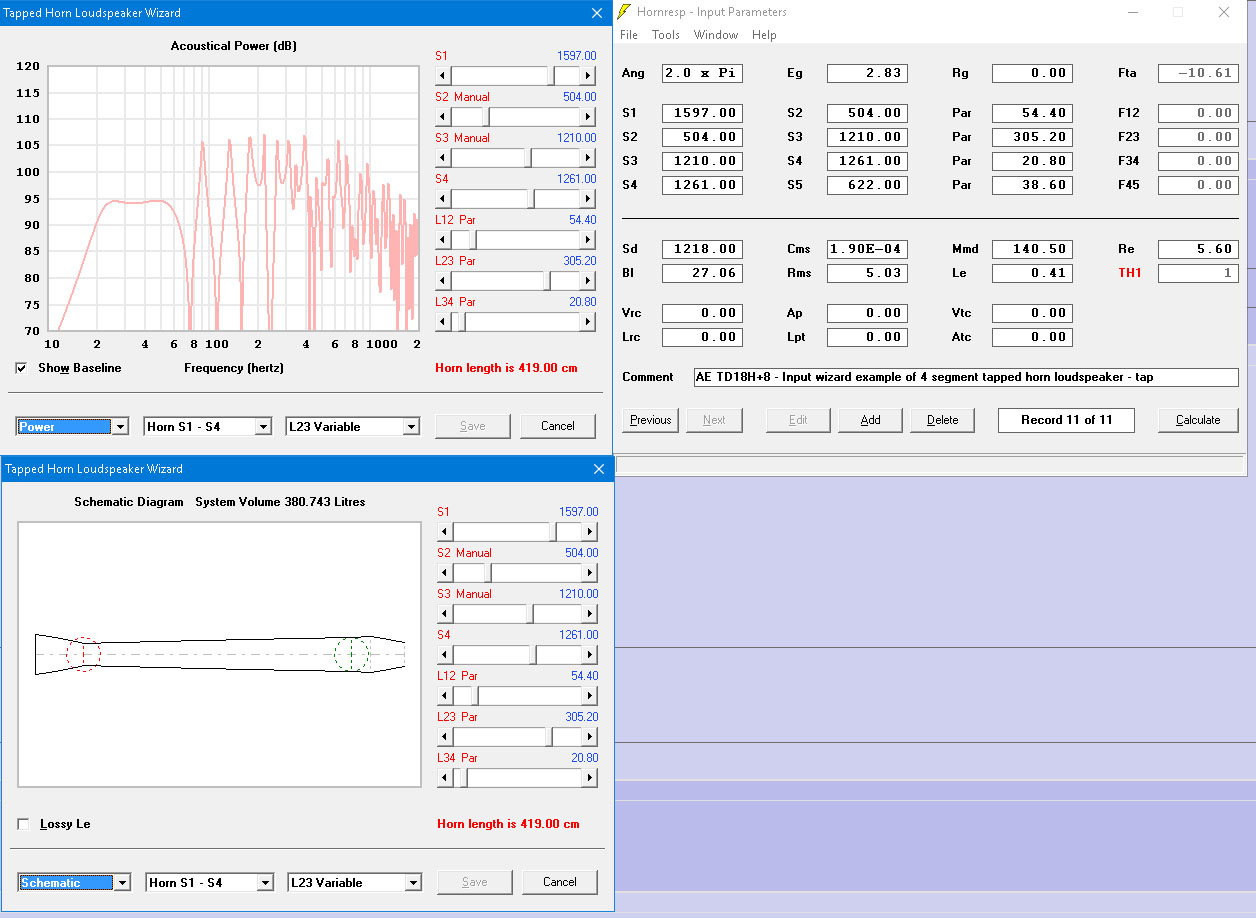
I'm just a guy twisiting numbers to try get a response, so take the designs with a grain of salt. I'm sure someone else can do better.....actually be my guess...lol
Box has to 32" wide and about the same in dept.
Attachments
If you got the space and you want a very high sound quality from your drivers.
Martinsson's Blog - ROAR18
See the original ROAR18 as an example for layout and design.
The simulation below is a larger version more optimized for your driver and a slightly lower downward response.
The plane loading of the front resonator and the splith path loading of the driver increases the ability to create very steep shock waves and enables a very high resolution of all the real life textures, timbre and modulations of the bass.
Martinsson's Blog - ROAR18
See the original ROAR18 as an example for layout and design.
The simulation below is a larger version more optimized for your driver and a slightly lower downward response.
The plane loading of the front resonator and the splith path loading of the driver increases the ability to create very steep shock waves and enables a very high resolution of all the real life textures, timbre and modulations of the bass.
Attachments
Here's an example of that driver in TH - this is a 35 Hz one (after stuffing) that's tuned to give high output from 40 Hz up to above 100 Hz, using the driver specs in your sim.
Holy Cow, Brian!
If you got the space and you want a very high sound quality from your drivers.
Martinsson's Blog - ROAR18
See the original ROAR18 as an example for layout and design.
The simulation below is a larger version more optimized for your driver and a slightly lower downward response.
The plane loading of the front resonator and the splith path loading of the driver increases the ability to create very steep shock waves and enables a very high resolution of all the real life textures, timbre and modulations of the bass.
OMG!
Thank both of you! I would like to get the knee closer to 25hz if possible. I'll jump into HR and see what happens...I have not been successful so far.
Should I be so in love with the Tapped horn as a subwoofer enclosure that I abandon my MLTL and potentially loose sensitivity for what what TH has to offer in the bandwidth that I desire? Does that question make sense?
I feel like the TH provides awesome assistance to the woofer diaphragm, which I might need in my case with my 18" wind sail but most of the levels in intended use are at 1-2mm of xmax in either enclosure.
I feel like the TH provides awesome assistance to the woofer diaphragm, which I might need in my case with my 18" wind sail but most of the levels in intended use are at 1-2mm of xmax in either enclosure.
In case you missed it. Circlomanen and Papasteack did exellent job for AE TD18h driver in BP An adventure with 8th order BP
- Home
- Loudspeakers
- Subwoofers
- TH vs MLTL - AE18H+
